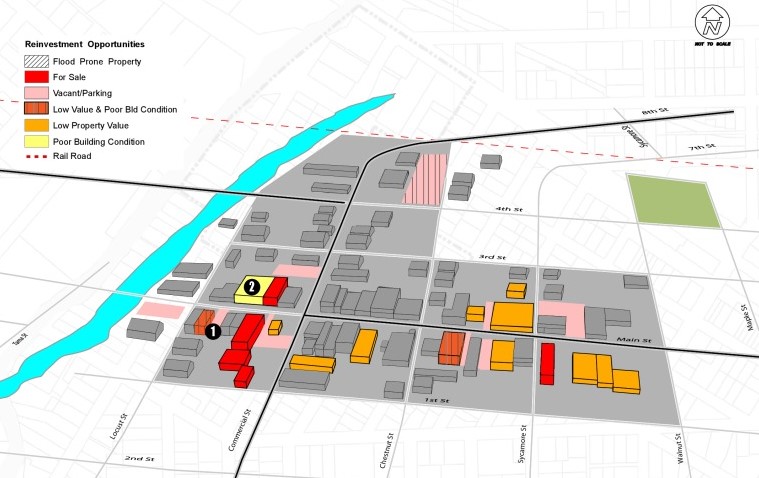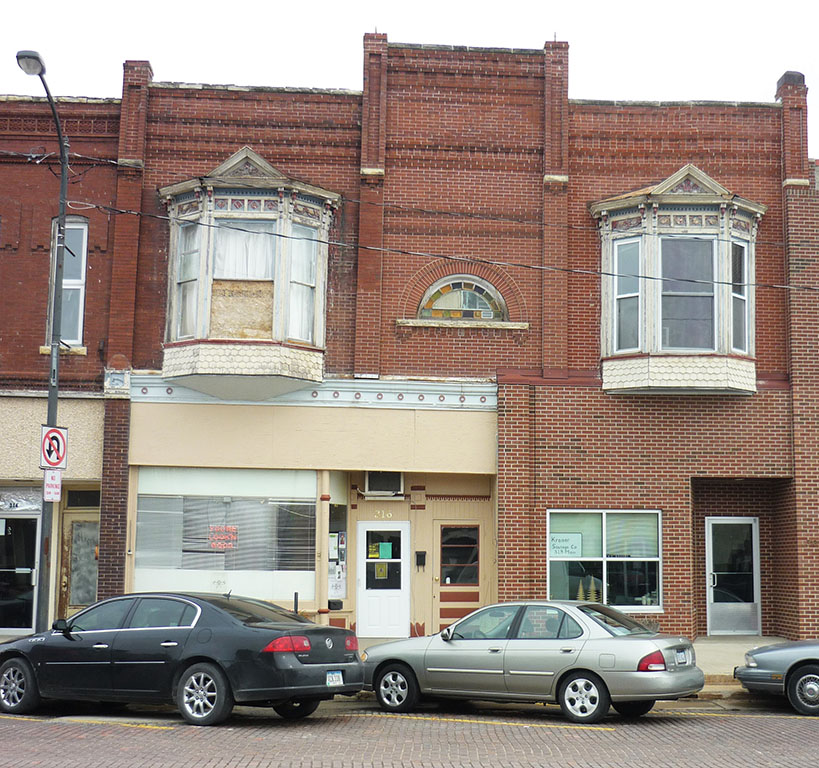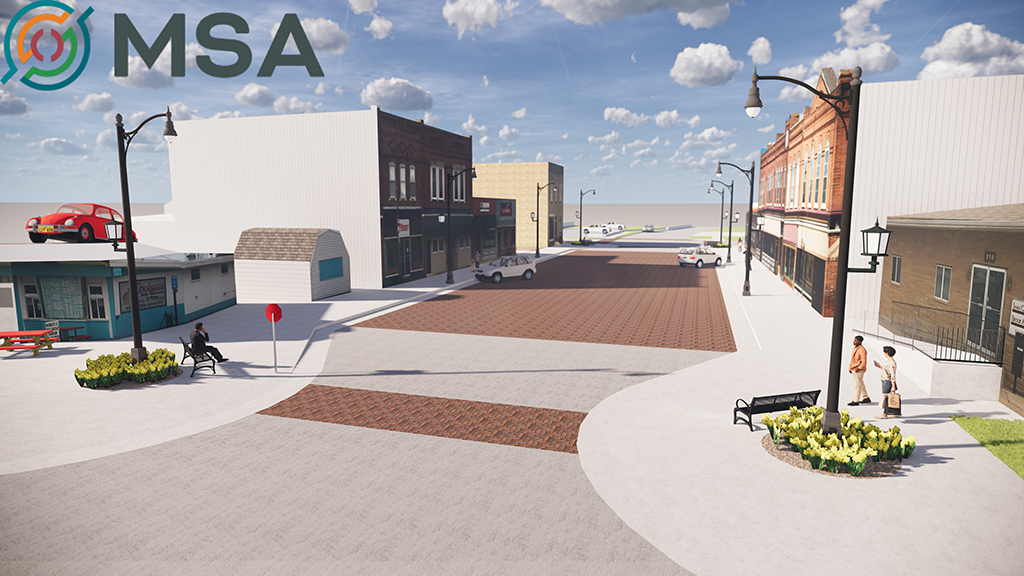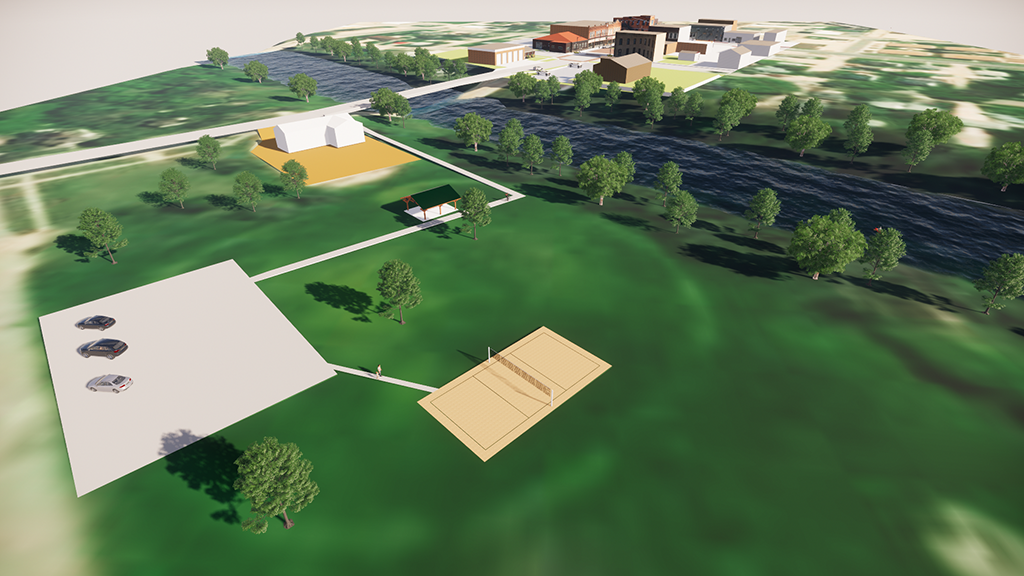It all begins with a 30,000-foot view. What do we see? A charming, rural community on the outskirts of a larger metropolitan area. Population, just over 2,200. Goal: reestablishing the community as a unique place to visit, and ultimately stay.

This story is not uncommon across the United States, especially as we see a trend toward urbanization, leaving many small towns struggling to maintain their public works, housing, commercial enterprise and identity. However, what these communities are realizing is that their strength and resiliency lies in what they’ve always possessed: a genuine history, a story, a depth of character that larger cities are now striving to emulate.
La Porte City, Iowa, is one of these communities. A small city on the fringe of two larger metropolitan areas — Waterloo to the north and Cedar Rapids to the south — both of which were beginning to adversely impact the economic vitality and population growth of their smaller neighbor. Yet, La Porte City is purposefully bucking the national trend and determined to chart their own course with a stronger, more resilient community.
What’s their secret? Start with a vision. Find funding to support it. Implement in phases.

Phase I – Vision
In 2013, La Porte City leaders began working with MSA on the creation of a Downtown Revitalization Plan with the idea to start in the core of the community. After all, downtown was already full of character, with Wolf Creek running along the edge and historic bricks lining the streets where a visitor could pick up a freshly baked doughnut or an ice cream cone on their way to the FFA Historical and Ag Museum.
The Downtown Revitalization Plan helped delineate the City’s vision for their downtown identity, create new standards for expansion, honor the historical and cultural roots of the area and develop a long-term strategy for growth. It first analyzed current conditions, took inventory of property and existing land use, and evaluated retail market opportunities before setting a phased approach that would include the transformation of Main Street, streetscaping enhancements, building preservation and site design standards, a redevelopment opportunities map, future land use map, suggested zoning changes map, and ideas for construction of a new park and recreational trail. It also identified some potential key funding sources to pursue to ensure success.

Phase II – Funding
MSA first assisted the City in applying for and securing vital CDBG Façade Improvement Program funding which led to the revitalization of 11 building facades lining Main Street, many of which had fallen to disrepair and blight.
The next step was seeking funding for upcoming street reconstruction. In this case, Main Street. A multi-million-dollar project, La Porte City needed to find funding to help with critical utility and surface upgrades to their main thoroughfare, last addressed in 1947. The City worked with MSA to target and apply for a large grant from the Black Hawk County Gaming Commission (BDCGM), a non-profit dedicated to funding projects and programs that help the Cedar Valley area prosper.
What made La Porte City’s project different, and what increased its chances of funding success, was that it entailed much more than a simple street rehab project. Attention was given early in the design process to ensure it had a broader appeal, incorporating the expertise of landscape architects, planners and engineers to work on concepts, models and visionary ideas to make the Main Street project something the community would be proud of, and something that the gaming commission might be more apt to support.
The Main Street Rehabilitation Project began in earnest in 2020 and replaced the deteriorating brick streets with new full-width PCC pavers to replicate the historic appearance of the 1908 clay originals, added new sidewalks and lighting, bump-outs at intersections to improve crossing safety and ADA compliance, reconstructed the City’s public parking lot and developed an empty lot on Main Street into a plaza area for community gatherings. Below grade, water and electric utilities were also replaced, along with a new storm sewer collection and conveyance system.

Additions to the project include the installation of local and public art into the Downtown District, accompanied by complementary benches and new aesthetic lighting. Hanging banners and wayfinding signage will help visitors navigate to the City’s amenities and historic features. In tandem with the reconstruction of Main Street, the City also chose to make enhancements to Wolf Creek Park, a three-acre park just adjacent to the downtown commercial district. This portion of the project included a new parking lot, canoe and kayak launch, benches, decorative lighting, and a 30-foot by 40-foot open pavilion to host gatherings and community events. A new walking path was also created, connecting Wolf Creek Park to the downtown business district as well as to the Cedar Valley Nature Trail, a 67-mile recreational trail that runs through several small towns and attracts thousands of users each year.
This more holistic vision and project narrative not only won over the La Porte City council and leaders, but also won over the gaming commission, who awarded the City’s application with a $750,000 grant, the largest granted by the commission in this round of award distribution.

Phase III – Implementation
The goal of the partnership with MSA was to create not only a robust Downtown Revitalization Plan for La Porte City, but a thorough list of steps, objectives and timelines for phased implementation. This helped delineate when to proceed with a number of important steps: applying for appropriate grants, drafting a Capital Improvements Plan, creating a Revitalization Action Committee for fundraising efforts, replacing aging utility and street infrastructure, and categorizing top-, high-, and low-priority redevelopment/reinvestment sites. The City also chose to adopt an Urban Revitalization Plan, which provided local property owners up to five years of tax incentives for new construction or substantial improvements made to existing properties.
Public engagement and participation were paramount to the success of the implementation process. Steering Committee and open house meetings helped sketch the community’s vision, examine existing conditions and gather citizen input. One-on-one interviews were held, as well as a hands-on design charrette workshop where participants worked on collaboratively defining redevelopment and identifying priorities and aspirations for the future of La Porte City. MSA also enjoyed collecting feedback and providing education by setting up a project booth at the City’s annual Festival of Trails.
A Vision Realized
These kinds of visions, paired with the necessary funding and a concise plan of execution, is what helps small municipalities make large strides in realizing their goals and putting their community back “on the map.” As for the view of east-central Iowa from 30,000 feet, the City of La Porte City certainly shines bright.
The Downtown Revitalization Plan for the City of La Porte City was recognized with a 2018 Planning Award from the American Planning Association (APA) – Iowa Chapter.
Learn how MSA can help your community plan for its award-winning future and contact us today to get the ball rolling!
